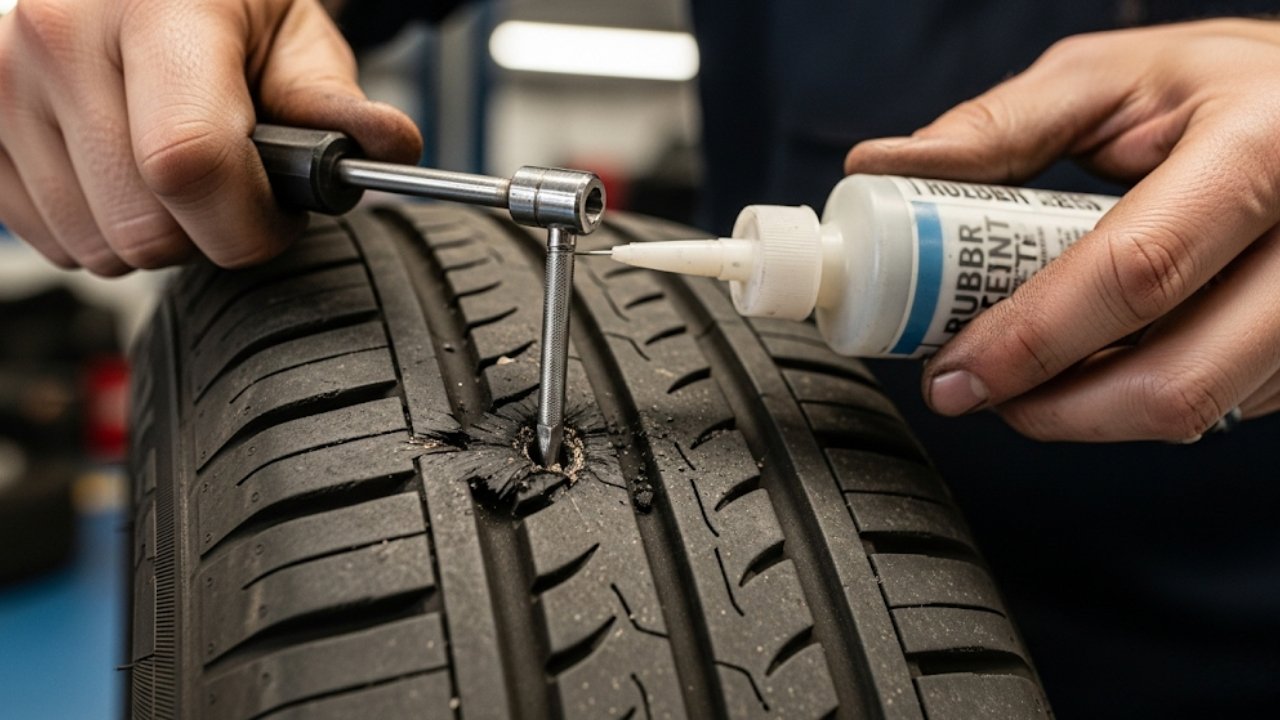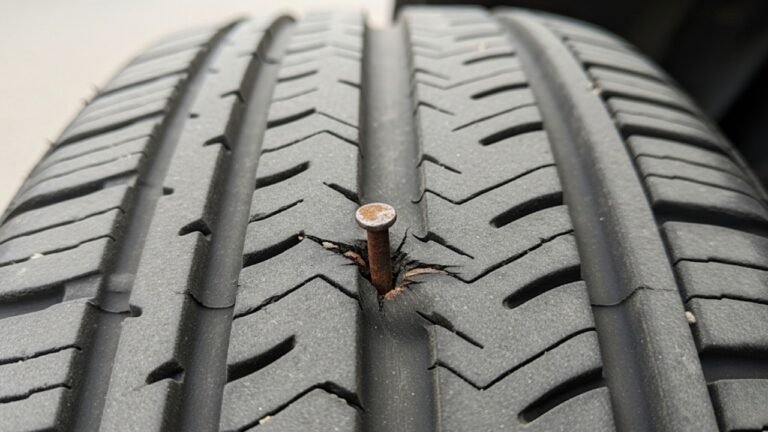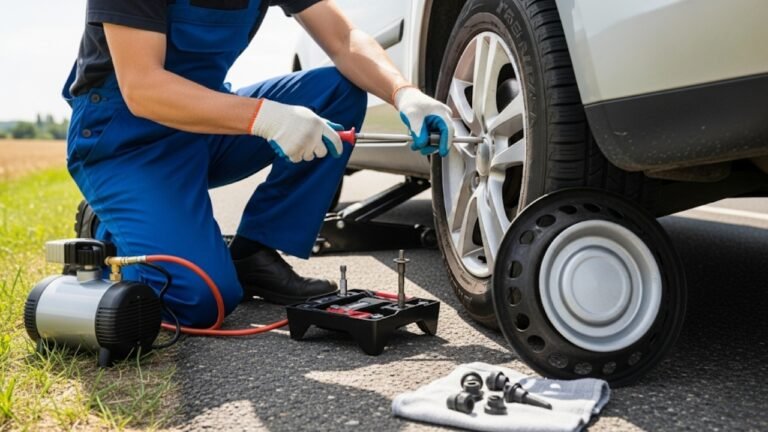How Much Does It Cost to Repair a Tire?

We’ve all been there. You’re cruising along, maybe heading to work or picking up the kids, and suddenly—thump, thump, thump—your steering wheel trembles. Your heart sinks. You pull over and realize your tire is either flat or damaged. And then comes the inevitable question: “How much does it cost to repair a tire?”
It’s not just about money—it’s about convenience, safety, and peace of mind. Whether it’s a tiny nail or a major sidewall gash, the cost to repair a tire varies depending on multiple factors. But don’t worry. I’ll walk you through everything—no technical jargon, no fluff. Just straight talk like a friend would give you over coffee.
Why Tire Repair Costs Matter More Than You Think

Here’s what’s at stake:
-
Your safety (blowouts at highway speeds are no joke)
-
Your car’s performance
-
Your fuel efficiency
-
Your overall tire lifespan
Knowing the actual cost to repair a tire helps you plan better, avoid getting ripped off, and make safer choices.
Typical Cost to Repair a Tire in the U.S.
Let’s get straight to it: the average cost to repair a tire in the U.S. ranges from $15 to $60.
Here’s a quick breakdown in a simple table:
| Type of Repair | Average Cost |
|---|---|
| Basic puncture patch | $15 – $30 |
| Plug + patch combo | $20 – $40 |
| Sidewall damage (usually non-repairable) | Replacement required |
| Valve stem replacement | $10 – $25 |
| TPMS sensor reset | $5 – $15 |
| Tire removal & rebalancing | $10 – $20 |
Keep in mind, these are just averages. Prices can shift depending on your location, the type of car you drive, and the severity of the damage.
Different Types of Tire Repairs and Their Costs
Now let’s dive deeper. Not all tire problems are created equal. And depending on the type of damage, your bill could be dirt cheap—or surprisingly high.
1. Nail in the Tread – The $15-$25 Fix
This is the most common and (luckily) the easiest to fix. If the nail or screw is within the tread area, a simple plug or patch does the job. Most local shops will charge around $15 to $25, and some even do it for free if you bought the tire from them.
Personal tip: I once had a flat while traveling in rural Georgia. A small family-run shop patched my tire for $10 and gave me sweet tea while I waited. Heartwarming, right?
2. Sidewall Damage – Replacement Time
If the damage is on the sidewall, bad news: it’s not repairable. The sidewall flexes too much while driving, and any patch will likely fail. In this case, you’ll need a new tire, which could cost anywhere from $80 to $250, depending on the brand and size.
So, if someone says they can “patch the sidewall,” walk away. That’s a red flag.
3. Valve Stem Issues – Sneaky Leaks
Sometimes the issue isn’t a puncture at all—it’s a leaky valve stem. If air keeps escaping slowly, this might be the culprit. Fixing or replacing it typically costs around $10 to $25.
4. Plug vs. Patch vs. Plug-Patch Combo
Let’s talk methods. Each has pros, cons, and cost differences:
-
Plug only (from the outside): Quick and cheap ($10-$15), but not ideal for long-term use.
-
Patch only (from the inside): Better seal, safer ($15-$25).
-
Plug + Patch combo: Best of both worlds. Slightly more expensive ($20-$40), but safer.
Shops like Firestone, Walmart, or Discount Tire usually offer the combo as standard practice now.
Tire Repair at Different Places: Comparing Prices
Where you go makes a big difference. Some places charge for labor, some don’t. Here’s a side-by-side comparison to give you an idea.
| Service Provider | Average Repair Cost | Free Repairs? |
|---|---|---|
| Walmart Auto Care Center | $10 – $15 | Only for Walmart tires |
| Discount Tire | $15 – $20 | Yes, for customers |
| Firestone | $20 – $40 | Sometimes |
| Local Repair Shops | $15 – $30 | Maybe, varies |
| AAA or Mobile Technicians | $40 – $60 | Rarely |
Factors That Affect the Cost to Repair a Tire
So why such a range in prices? Here are some factors that influence how much you’ll pay:
-
Type of damage: Small puncture vs. large tear = big price difference.
-
Repair method: Plug, patch, or full replacement.
-
Location: City prices can be double those in small towns.
-
Time of service: Emergency roadside repairs can be 2-3x more.
-
Tire type: Run-flats, low-profile tires, and large truck tires cost more to fix or replace.
Here’s the thing—run-flat tires often can’t be repaired at all. So if you’ve got a BMW or luxury vehicle with those, be ready for higher costs.
Should You Repair or Replace Your Tire?
Here’s a quick cheat sheet to help you decide:
Repair It If:
-
The puncture is within the tread area
-
The hole is less than 1/4 inch wide
-
The tire hasn’t been repaired before in that spot
-
The tire tread is still above 4/32”
Replace It If:
-
The damage is on the sidewall
-
The hole is larger than 1/4 inch
-
There are multiple punctures too close together
-
The tire is worn out or aged
Can You DIY a Tire Repair?
Yes, but it comes with a big warning sign.
Tire repair kits are available at auto stores or online for around $10–$25. These usually include rubber plugs, tools, and maybe even sealant. They work in a pinch, especially if you’re stuck on the road. But they’re not always reliable for the long haul.
I once plugged a tire in the rain during a camping trip. It got me home—but I still had to get it patched properly later. A plug is a temporary fix, not a forever solution.
Watch Out for Hidden Costs and Upsells
When you walk into a tire shop, the basic tire repair cost might seem low—but don’t be fooled. Some places try to sneak in extra charges you didn’t expect. Here are a few common ones to be aware of:
-
Tire Balancing: Some shops insist on rebalancing your tire after a repair. It’s not always necessary unless the tire was removed. Expect to pay $10 to $15 extra.
-
Tire Disposal Fee: If your tire is unrepairable and you need a new one, they might charge $2 to $5 to take the old one off your hands.
-
New Valve Stem: It’s sometimes added to the bill, even if yours is fine.
-
Alignment Check: Not always needed unless you’ve hit a curb or pothole hard, but it may be recommended—adding $50 to $100.
So, always ask: “Is that included in the price?” or “Can I skip this?”—trust me, it can save you a lot.
How to Save Money on Tire Repairs
Tire problems can be frustrating, but saving money is possible—if you know where to look and how to ask. Here’s how you can keep more cash in your pocket:
1. Check Your Warranty
Many tire manufacturers offer road hazard protection, which may include free repairs or discounted replacements. If you bought your tires new, check your purchase paperwork or receipt.
2. Use Membership Perks
If you’re a member of:
-
Costco
-
Sam’s Club
-
AAA
-
AARP
…you may already be eligible for free tire repair services. Even some credit cards (like American Express or Visa Signature) offer roadside assistance or reimbursements.
3. Avoid Chain Store Markups
National chains may add overhead fees. Instead, check out independent tire shops. They’re often cheaper and more willing to negotiate, especially in smaller towns.
4. Learn to Do a Plug Job Yourself
If you’re confident with your hands, a $10 DIY kit could save you $30–$50 per repair. Just remember—it’s a temporary fix. Always follow up with a professional patch when you can.
Insurance, Roadside Assistance & Tire Repair
Here’s an angle most people forget: auto insurance and roadside assistance policies sometimes cover tire repairs.
-
Comprehensive insurance usually won’t pay for tire repairs unless it’s linked to a larger accident.
-
However, roadside assistance plans often cover tire repair, inflation, or replacement—at no cost to you.
-
Providers like GEICO, Progressive, State Farm, and Allstate have specific guidelines. It’s worth checking your policy.
Pro tip: Next time you renew your insurance, ask: “Do you offer roadside tire coverage?” Sometimes adding it costs less than one repair job!
Is It Safe to Drive After a Tire Repair?
This is a big one. The answer depends on how the tire was repaired.
-
If it was professionally patched from the inside and the damage was small, then yes—it’s usually safe to drive at normal speeds.
-
But if you used a plug or sealant in an emergency, you should treat that like a band-aid, not a cure. Head to a shop ASAP.
You also want to check:
-
The tire is holding pressure
-
There’s no vibration or wobbling
-
Your TPMS (Tire Pressure Monitoring System) light is off
If anything feels off, trust your gut. Safety > savings.
FAQs About Tire Repair Costs
1. How much does it cost to repair a tire at Walmart?
At Walmart Auto Care Centers, a flat tire repair costs around $15 per tire, and it’s even cheaper (or free) if you bought the tires there.
2. Is plugging a tire cheaper than patching?
Yes, plugging a tire typically costs $10 to $15, while patching costs $15 to $25. However, a patch offers a stronger and longer-lasting seal.
3. Can I drive on a patched tire long term?
Absolutely—if the patch was done professionally and the damage was minor, a patched tire can last thousands of miles without issue.
4. What’s the most expensive type of tire repair?
The most expensive case is irreparable damage, like a gash on the sidewall. This requires buying a new tire, which can cost $100–$300+, especially for performance or run-flat tires.
5. Are tire repairs covered under warranty?
Yes—many tire retailers and manufacturers offer limited warranties that cover flat repairs for a set number of years or miles.
6. How long does a tire repair take?
Most tire repairs take 15 to 45 minutes, depending on the type of fix and how busy the shop is.
7. Is a DIY tire repair kit worth it?
Yes, but only in emergency situations. It’s not a replacement for professional patching, but it can be a lifesaver on the road.
8. What tools do I need for a DIY tire repair?
-
Tire plug kit
-
Air compressor or can of sealant
-
Jack and lug wrench (to remove the tire)
These cost $20–$40 total and are great to keep in your trunk.
Final Thoughts: Your Tire, Your Call
So, how much does it cost to repair a tire? As you’ve seen, it can be as low as $10 or as high as $250+—depending on what went wrong. The most common fixes usually sit comfortably in the $15 to $40 range.
The real value, though, is knowing what to expect. When you’re informed, you’re empowered. You can avoid getting overcharged, make safer decisions, and maybe even handle a quick repair yourself.
Here’s a quick recap to keep in mind:
-
Always inspect your tire damage as soon as you notice a problem.
-
Get multiple quotes before agreeing to a price.
-
Ask about warranties, road hazard coverage, and membership discounts.
-
Consider learning basic DIY repair skills for emergencies.
-
Don’t delay a repair—what costs $20 today might cost $200 tomorrow.



